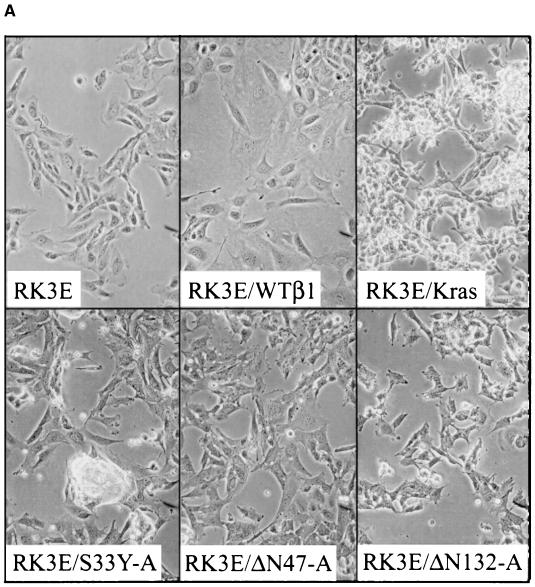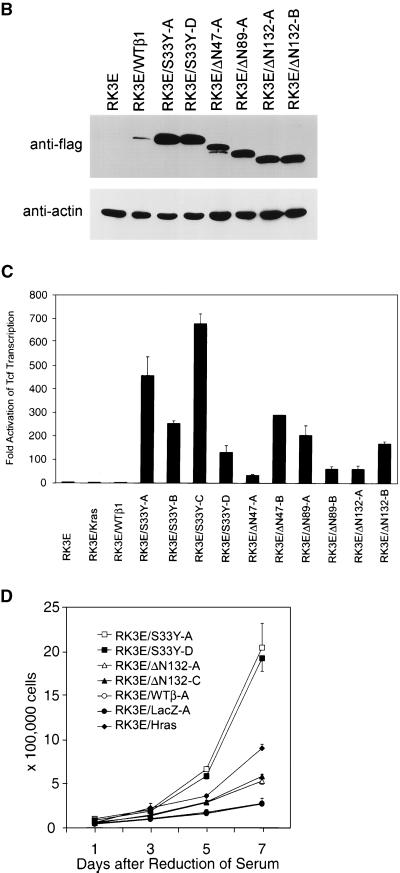FIG. 3.
Altered phenotypic properties of stable RK3E cells transformed by mutated β-cat proteins. (A) Morphology of parental RK3E cells and a polyclonal RK3E line with overexpression of wild-type β-cat are shown in the top left and top center panels, respectively. A polyclonal RK3E line transformed by K-Ras (RK3E/Kras) is shown at the top right. Three different RK3E lines transformed by mutant β-cat are shown at the bottom. Magnification for all panels, ×200. (B) ECL-Western blot analysis of Flag-epitope tagged β-cat proteins in stable RK3E cell lines and the negative control RK3E parental line. The blot was stripped, and ECL-Western blot analysis with anti-actin antibody was carried out to control for loading of the lanes. (C) RK3E lines stably transformed by mutated β-cat proteins have markedly elevated Tcf transcription activity compared to control lines (parental RK3E, RK3E/Kras, or RK3E/WTβ1). The ratio of luciferase activities from a Tcf-responsive reporter (pTOPFLASH) and a control luciferase reporter gene construct (pFOPFLASH) was measured for each cell line 48 h after transfection. Mean values and standard deviations from three independent experiments are shown. (D) RK3E lines transformed by mutated β-cat proliferate in 0.5% serum. A total of 2 × 104 cells were seeded in 35-mm dishes in the presence of growth medium containing 10% fetal bovine serum. The following day, the medium was exchanged for medium containing 0.5% fetal bovine serum. Cell numbers were determined at specific time points after the switch to 0.5% serum. Values shown represent the means and standard deviations of triplicate experiments.


